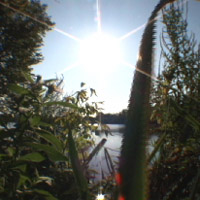Join us for conversations that inspire, recognize, and encourage innovation and best practices in the education profession.
Available on Apple Podcasts, Spotify, Google Podcasts, and more.

The sun, source of energy for life on Earth
During this session, you will have an opportunity to build understandings to help you:
In Session 1, we saw that one characteristic of life was the need for a constant supply of matter and energy. Why is this? What’s the difference between the two? The next two sessions explore these questions. Session 7 focuses on energy and life, while Session 8 focuses on matter and life.
One consequence of evolution is a living world that is both remarkably diverse and incredibly complex. Session 7 begins a study of life at the level of communities, where diversity and complexity are sustained, in part, by the constant flow of energy. Thinking about food chains in communities focuses us on the connection between energy and life.
Dr. Herbert Thier, representing the SCIS 3+ curriculum, highlights the importance of building understandings of community-level phenomena in the elementary-school years. We see this happening in Melissa Minnick’s fifth-grade classroom in Walkersville, Maryland, where they are using the SCIS 3+ unit “Communities” to explore energy flow along food chains in classroom terrariums. Throughout the program, interviews with fourth and fifth graders in the Science Studio reflect research on children’s ideas about energy and life.
Our own exploration of energy flow begins with a distinction between energy and matter and how both relate to food. We then proceed to look at energy reactions along the links of a food chain. Dr. Aaron Ellison, who researches carnivorous plants, looks at producers and examines photosynthesis as one key energy reaction, followed by the introduction of cell respiration as another. Dr. Marianne Farrington, of the New England Aquarium, goes behind the scenes to highlight the consumers and their energy needs. Decomposers are next in line as we visit a compost research facility, where Dr. Sanat Majumder describes their role in energy flow.
Dr. Les Kaufman, an ecologist, introduces us to energy pyramids as he describes what happens to energy as it flows through a community–setting up what will ultimately be a distinction between energy and matter. And Dr. Paul Williams returns, highlighting progress with Bottle Biology and pointing out a system for studying energy flow: the EcoColumn.